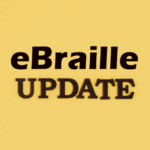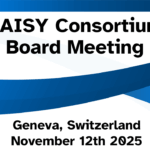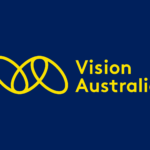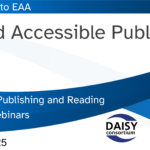Earlier this year we conducted a survey of AI use by DAISY Members, this was a repeat of a survey conducted last year to gauge interest in and use of artificial intelligence in the creation and transformation of accessible formats.…
EBraille Project Update
The eBraille project, tasked with creating a modern digital braille file format, has made significant progress this year. Thanks to the hard work of the global working group, the eBraille 1.0 specification was published in August of 2025 and approved…
DAISY Open Board Meeting – November 2025
The DAISY Board meeting was kindly hosted by WIPO in Geneva, Switzerland. The open meeting was live streamed on Zoom and we’re happy to include the video and related resources on this page. The full recording is almost three hours…
AI Generated Image Description Myths Tested
Image descriptions play a key role in accessibility. Providing descriptions of images in accessible books is a challenging and often time-consuming task, especially for complex content. This is why the publishing and accessibility communities are always seeking new ways to…
Vision Australia – 20 Years of Innovation
In September 2025 Vision Australia celebrated 20 years since the launch of their innovative online library service, a model that continues to inspire library services around the world. To join the celebrations we take a look at the story behind…
Training Trainers in Accessible Format Production
Access to information provides the key to education, inclusion and employment. Modern publishing practices and accessible digital format have the potential to unlock a world of opportunities, and this is especially true in lower and middle income countries. Through a…
Tactile Reading & Graphics Conference 2025
Tactile Reading & Graphics is a recurring international conference. In June 2025 in the Netherlands the event brought together over 500 worldwide participants contributing to making information accessible through tactile solutions. In addition to hearing about developments and approaches…
EAA Celebration, Reflection and Prognostication, T-3 (W)
In our series of free webinars June 25th saw a session that focused on celebrating and reflecting on all the good work that has gone into preparations for the EAA as well as looking forward to what still needs attention. This…
AI and Accessible Publishing T-31 (W)
In our series of free webinars May 28th saw a session focused on AI and Accessible Publishing where our expert panel discussed ways of using AI in accessible publishing in a variety of ways and whether the promise of AI might…
An Insider’s Look at InDesign’s Accessibility Improvements (W)
This week The DAISY Consortium was pleased to coordinate and host a special webinar focused on the accessibility improvements that have been made to Adobe InDesign. This page contains: Full Video of the Webinar Speaker Information Session Overview Related Resources…











